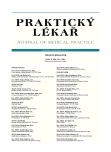The QUALICOPC study – a comparison of development of primary care in 31 European countries
Authors:
B. Seifert 1; N. Šrámková 2; N. Král 1; W. Schafer 3; W. Boerma 3; P. Groenewegen 3,4
Authors‘ workplace:
Ústav všeobecného lékařství 1. LF UK, Praha, Přednosta: doc. MUDr. Bohumil Seifert, Ph. D.
1; Společnost všeobecného lékařství ČLS JEP
2; NIVEL, Netherlands Institute for Health Services Research, Utrecht, The Netherlands
3; Department of Sociology and Department of Human Geography, Utrecht University, The Netherlands
4
Published in:
Prakt. Lék. 2012; 92(4): 235-237
Category:
Of different specialties
Overview
The QUALICOPC (Quality and Costs of Primary Care in Europe) study was initiated in 2010. The aim of this study is to evaluate quality, costs and equity of primary care in 31 European countries. The researchers of this study are trying to determine what the benefits of primary care are and what effect the strength of a primary care system has on the performance of health care systems. The study is funded by the European Commission under the so-called “Seventh Framework Programme” and is coordinated by NIVEL, The Netherlands Institute for Health Services Research. In this article the background and design of the QUALICOPC study is described. The data collection is being carried out at three levels: the health care system, the GP practice and the level of the patient. Information at the practice- and patient level is being collected through surveys among GPs and their patients. In each country the aim is to garner the response of 220 GPs from a representative sample and to address 2200 patients. The study in the Czech Republic is coordinated by The Institute of General Practice, the First Faculty of Medicine of Charles University in co-operation with the Czech Medical Association of Jan Evangelista Purkyne.
Key words:
primary care, general practice, health care system, quality of care.
Sources
1. World Health Organisation. The world health report 2008: primary health care – now more than ever. Geneva: World Health Organisation, 2008.
2. World Health Organisation. The financial crisis and global health: report of a high-level consultation, 19 january 2009. Geneva, World Health Organization, 2009.
3. Kringos, D.S., Boerma, W.G., Hutchinson, A., et al. The breadth of primary care: a systematic literature review of its core dimensions. BMC Health Serv Res, 2010, 10, 65.
4. Schäfer, W.L.A., Boerma, W.G.W., Kringos, D.S., et al. QUALICOPC, a multi-country study evaluating quality, costs and equity in primary care. BMC Fam Pract, 2011, 12, 115.
5. Starfield, B., Shi, L., Macinko, J. Contribution of primary care to health systems and health. Milbank Q, 2005, 83: 457–502.
6. Kerssens, J.J., Groenewegen, P.P., Sixma, H.J., et al. Comparison of patient evaluations of health care quality in relation to WHO measures of achievement in 12 European countries. Bull World Health Organ, 2004, 82: 106–114.
7. De Maeseneer, J.M., De Prins, L., Gosset, C., Heyerick, J. Provider continuity in family medicine: does it make a difference for total health care costs? Ann Fam Med, 2003, 1: 144–148.
8. Delnoij, D., Van Merode, G., Paulus, A., Groenewegen, P. Does general practitioner gatekeeping curb health care expenditure? J Health Serv Res Policy, 2000, 5: 22–26.
Labels
General practitioner for children and adolescents General practitioner for adultsArticle was published in
General Practitioner

2012 Issue 4
- Memantine Eases Daily Life for Patients and Caregivers
- Metamizole vs. Tramadol in Postoperative Analgesia
- Metamizole at a Glance and in Practice – Effective Non-Opioid Analgesic for All Ages
- Memantine in Dementia Therapy – Current Findings and Possible Future Applications
- What Effect Can Be Expected from Limosilactobacillus reuteri in Mucositis and Peri-Implantitis?
Most read in this issue
- Asthma and nutrition: diet for the primary prevention and treatment of asthma
- Variants of human chromosomes and their significance from the point of view of clinical genetics
- What is the risk of disease caused by Legionella in the Czech Republic?
- The importance of histological verification of tumour metastasis
